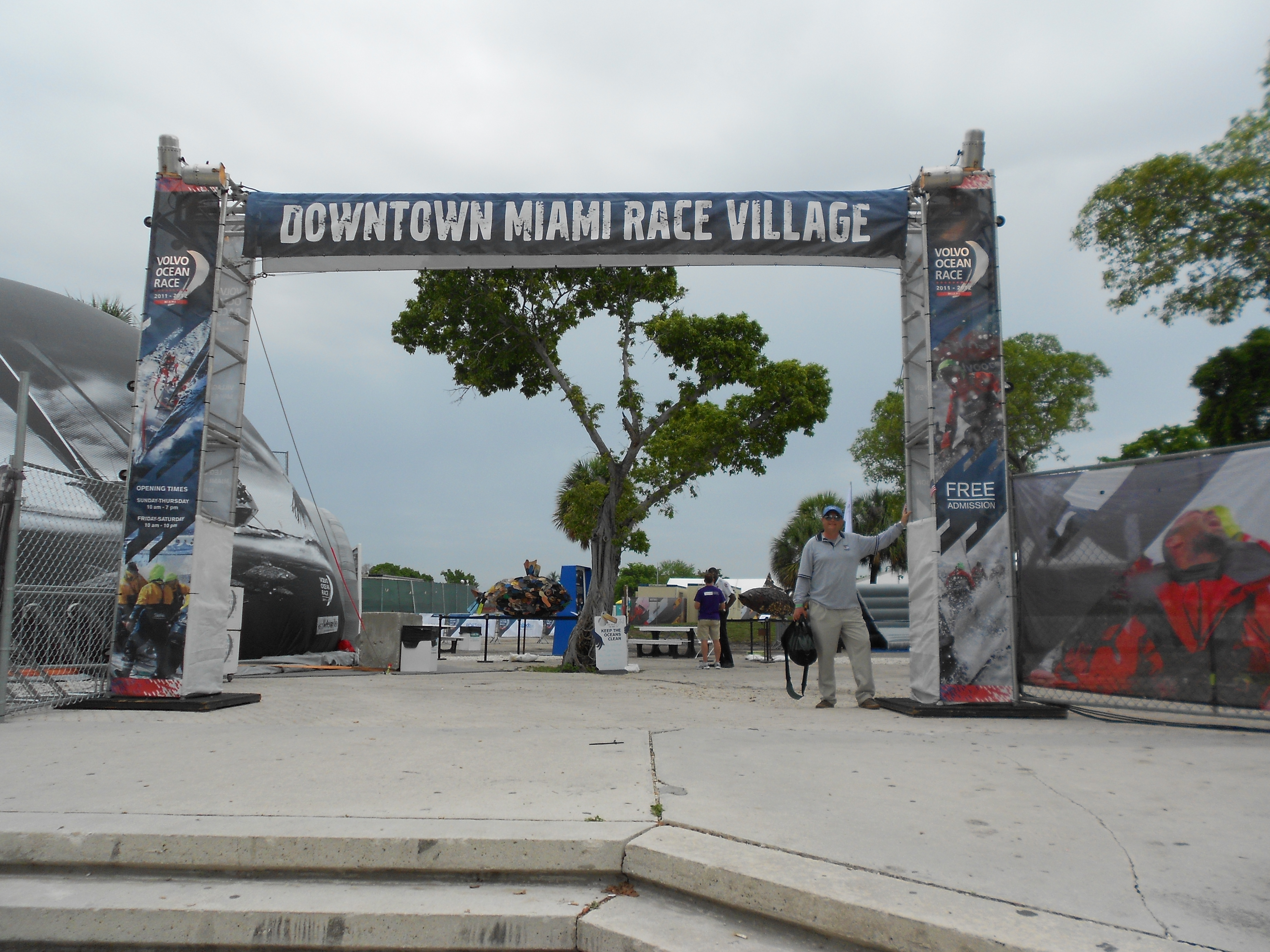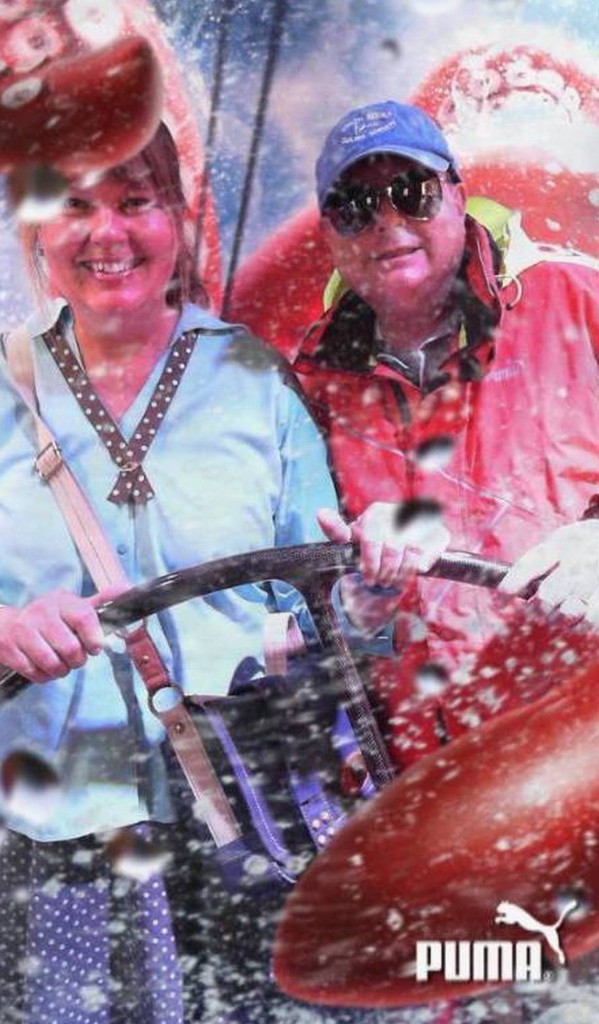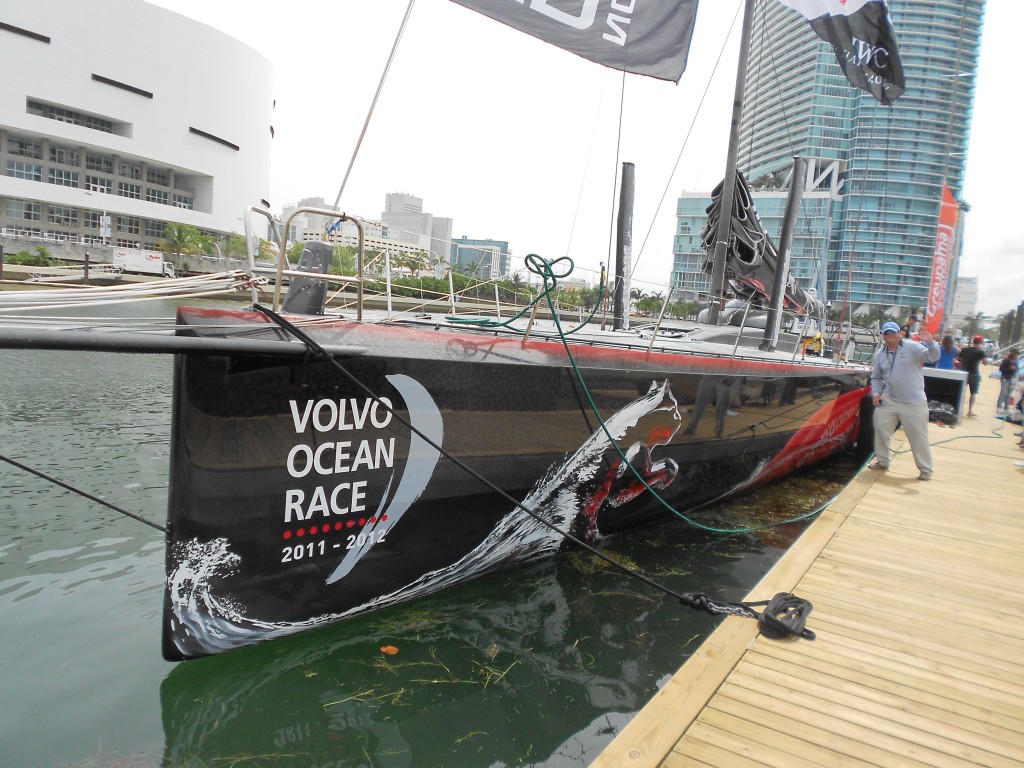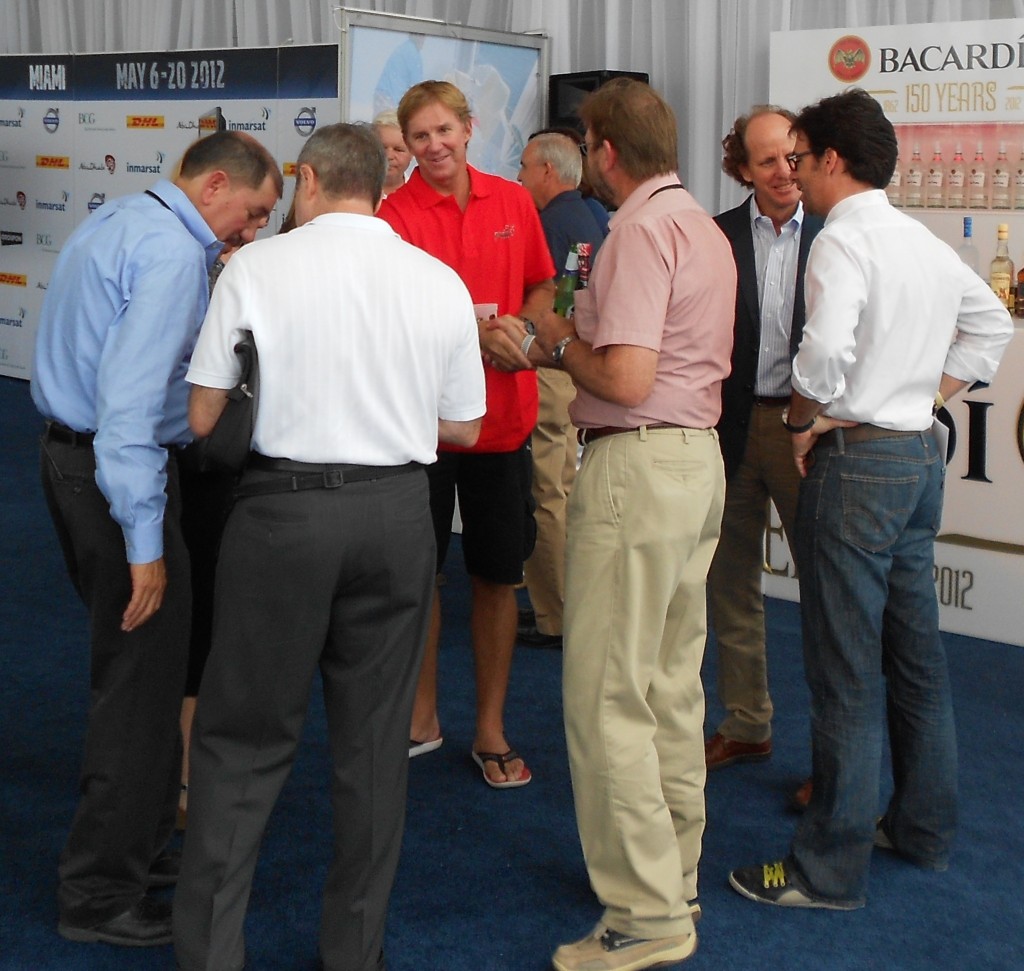Held every three years, The Ocean Race is one of the most popular spectator sports after Formula 1 and the World Cup

The race appeals to sailing enthusiasts and sports fans around the world. Previously known as the Whitbread Round the World Race and later the Volvo Ocean Race, this enduring pinnacle of offshore racing is a grueling global competition that pushes the skills of team sailors and designers to their limits, We visited the Volvo Ocean Race in Miami in 2012.

In 2023
The Ocean Race (formerly the Volvo Ocean Race) features two classes of boats, the IMOCA 60 and the VO65. The VO65 boats are built to a strict one-design rule, meaning they are identical in every way. The boats are controlled by a hydraulic system, and the crew size is 10-12 people.
Water Ballast in the VO65, VO70, & IMOCA 60
https://en.m.wikipedia.org/wiki/Volvo_Ocean_65
The Volvo Ocean 65 has several innovative features that make it a high-performing and competitive race machine. The V065 has two aft and one forward water ballast tanks, which provide righting moment and make the boat more stable. The boat also has a hydraulic system that controls the canting keel and twin rudders. The boat has an inclined keel pin axis that creates a large vertical force on the keel fin, creating lift and reducing the displacement and the amount of drag. There are eight bulkheads, which make the structure stronger and more solid than a typical Volvo Open 70 boat. The Volvo Ocean 65 has a high-performance rotating mast with a square-top mainsail and a jib. There are eight Volvo Ocean 65’s. They have all been brought to the same standard between the 2014–2015 and the 2017–2018 race at an estimated upgrade cost in the €1 million range. Designed by Farr Yacht Design, these boats were intended to be a cheaper and safer alternative to the expensive and fragile Volvo Open 70.

Unlike the VO65, the Volvo Open 70 is not a one design boat but rather a set of design rules to which competing boats must adhere. This is called a one-design. The builds proved expensive and fragile, with numerous structural failures during races. The VO70 rule requires a minimum angle of vanishing stability of 115 degrees, which is calculated with all appendages in their worst possible position. The VO70 rule allows the designer to place the hinge axis for the canting keel up to a maximum of 150mm above the hull surface. In that configuration, I consider it a multihull.

Ken Read was the skipper of PUMA Ocean Racing, which participated in the Volvo Ocean Race in 2012, the year my wife and I attended. The yacht was named “il mostro”. The Volvo 70 is a former class of racing yachts designed for the Volvo Ocean Race, which was first used in the 2005-06 race. Prior to 2005, 80 foot maxis were used. After 2012 Reed set multiple records in Comanche, a super maxi, beating records previous set by the VO70s.
A VO70 first broke the world monohull speed record in 2005, with other V70s resetting the record in subsequent years, such that the VO70s held the record for 10 consecutive years.
In April 2005, the VO70 Movistar broke the 24 hour world monohull speed record when she sailed 530 nautical miles. In 2006 ABN Amro II broke that record when she sailed 562.96 nautical miles. This record was broken in October 2008 by Ericsson 4 with 596.6 nm. Ericsson 4 skipper Torben Grael and his crew made the record on the first leg of the 2008–2009 Volvo Ocean Race, when a strong cold front hit the fleet, bringing winds approaching 40 knots, and propelling the yacht at an average speed of 24.8 knots.
This record stood for 7 years until the supermaxi Comanche, a boat 30 feet longer than the VO70s, established a new record of 618.01 nautical miles on July 10–11 2015 in the Transatlantic Race.
https://en.m.wikipedia.org/wiki/Volvo_Open_70
Foiling Ocean Race Vessels also have Water Ballast
The IMOCA Class uses a development design rule which allows the designers to experiment with hull and sail shapes within set parameters. However, rotating masts, booms and standing rigging are one-design. IMOCA stands for International Monohull Open Class Association. The aim of the class is to develop a fleet of boats that can compete in the most prestigious ocean races, such as the Route du Rhum and the Vendée Globe as well as The Ocean Race. These boats are solo handled in some races.
The IMOCA 60 is a 60-foot boat with a canting keel. The primary ballast used in the IMOCA 60 boats is water ballast. The 2023 edition of The Ocean Race will allow comparison between the all-new, super-fast and foiling IMOCA 60s and the one-design VO65 fleet.
The 60-foot IMOCA Class is racing around the world for The Ocean Race Trophy, while the 65-foot VO65 Class is racing for The Ocean Race VO65 Sprint Cup over three legs: Leg 1 from Alicante, Spain to Cabo Verde, Leg 6 from Aarhus, Denmark to The Hague in the Netherlands, and Leg 7 from The Hague to Genova, Italy.



Early on the morning of April 27, Holcim-PRB dismasted off the coast of Brazil. The IMOCA 60 was in just days into Leg 4 of The Ocean Race, sailing in moderate conditions. The failure comes as something of a shock since Holcim-PRB has been so dominant in the race up until this point, winning three out of four scoring opportunities and coming in second in the remaining one.
https://youtube.com/shorts/IZRSJUhh_20?feature=share